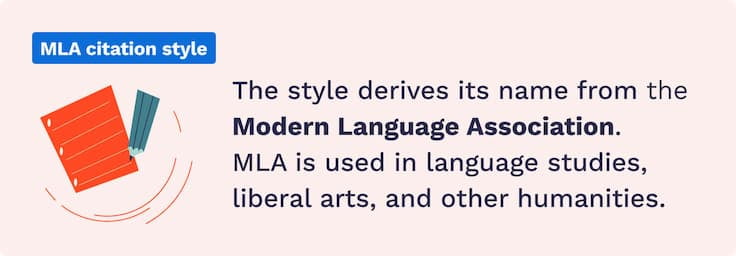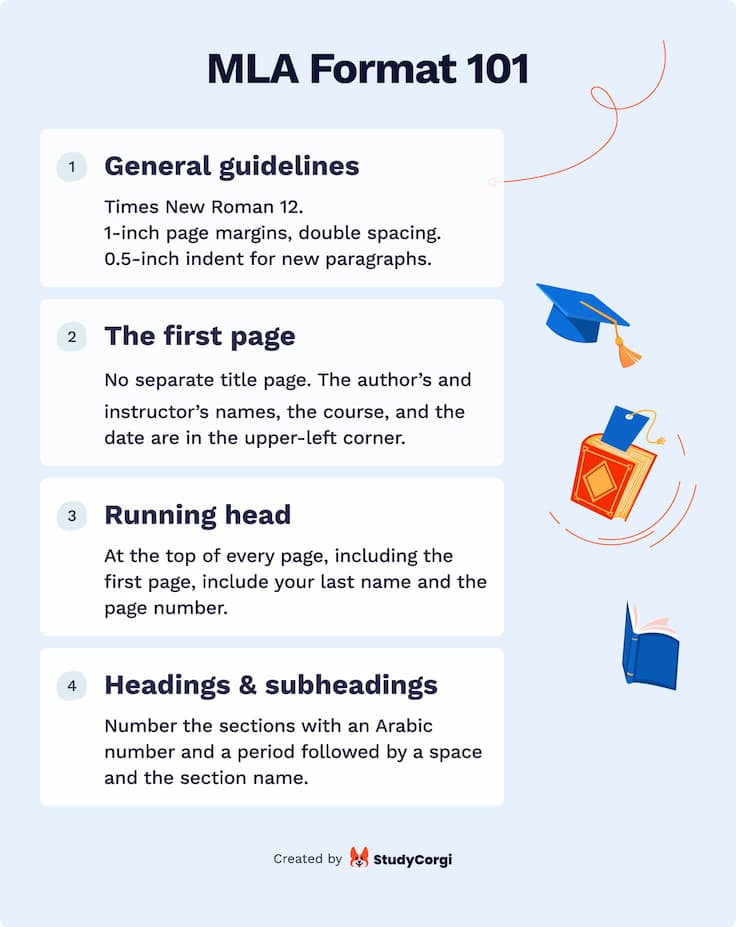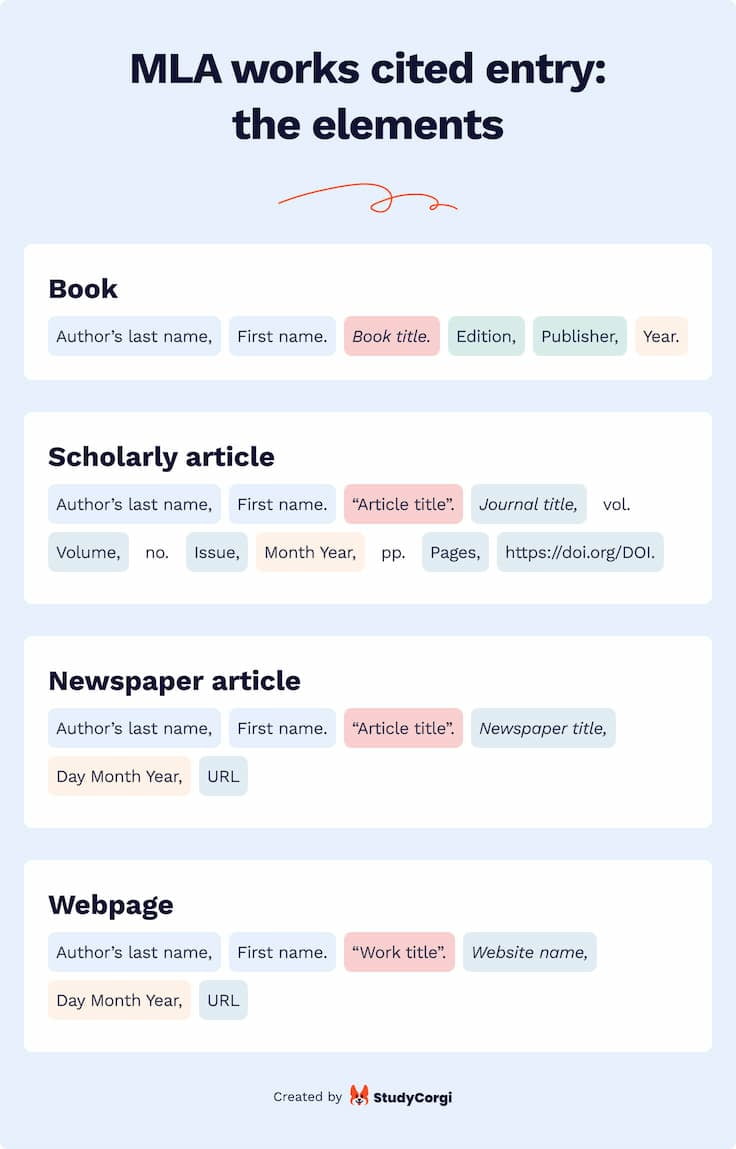🛠️ Citation Machine MLA 9 - How to Use It?
Take the 4 steps below to use the tool:
- Choose the type of source you wish to cite. It can be a website, a book, an article, a chapter in edited books, or a social media post.
- Provide the necessary information in the search bar. Users can paste URLs, titles, DOI, or ISBN information.
- Add the information manually if there are any difficulties with your search.
- Click “Cite” once you’re done.
Note that you can save bibliographical lists and name them. For example, “The Great Gatsby essay” or “Math project.” Additionally, you can copy references and enable the “in-text citation” option. Users may even use the quoting machine to download bibliographies in Word format.
🔥 MLA Reference Generator Benefits
There are 4 key benefits of using our citation machine:
| 100% Intuitive | Our tool knows what you want from a citation. All users have to do is select a style and add the necessary information. You can use prompts to guide you through this process if it's your first time using our platform. |
| 100% Accurate | We’ve spent considerable time and effort developing and fine-tuning this tool. It generates quotes that strictly follow the current versions of modern quotation styles. |
| 100% Quick | You can quickly search for citations by title, DOI, and ISBN. They can be used to find suitable sources automatically. You can also enter requests manually if you fail to find the necessary sources based on their characteristics. |
| 100% Ad-free | Our platform is entirely free of intrusive banners and video ads. You won’t have to pay to disable the ads. |
📖 MLA Format 101
The Modern Language Association is responsible for creating this citation style. Its history dates back to 1951 and the release of the original MLA Style Sheet.

The 31-page document explained how to make citations and contained examples of the method’s components.
MLA guide was later expanded into 5 editions between 1977 and 1999.
MLA’s previous version was published in 2016, with the 9th edition released in 2021. A universal standard for all source types was the 8th edition’s most significant update. Before, researchers applied different formats for websites, articles, books, etc. 2016’s version made it easier to create quotes and list cited works.
The modern variant of this style can be found in papers on linguistics, art, literature, and other humanities. It standardizes how researchers and scholars format papers and list sources.
With its help, readers will more likely understand and explore used sources. Our free MLA citation machine uses the current version of this method.
General Guidelines
We know you want to see how accurate our citation machine MLA 9 algorithm is. But first, we have to cover the basics. These things are as crucial to the format as proper in-text citations and the Works Cited page.

You should know several essential things about MLA formatting:
- The paper has to be double-spaced with an easy-to-understand font size of 12 pt. MLA favors regular and italic styles like Times New Roman.
- Researchers should leave one space after punctuation marks.
- Document margins are placed at 1 inch on all sides.
- Pages numbers are in the upper right-hand corner.
- The first line of each paragraph should be indented one-half-inch.
- Use italics to indicate long work titles.
- Endnotes are placed on a separate page before the “Works Cited” section.
💬 MLA Citation Format
The below sections explain how MLA in-text citations and references should be formatted.
Generating MLA In-text Citations
In-text citations are small bits of information that correspond to used sources.
The MLA style is slightly different from APA. It only lists the author's last name and the page number from the quoted source.
MLA’s 9th edition uses parenthetical citations. Quoted sources are put in parentheses at the end of a sentence.
(Smith 17-19)
Researchers must use this method when citing or paraphrasing a piece of information. The parenthetical approach prevails in the MLA style. But there are several cases when the construction isn’t at the end of a sentence, or it's possible to omit some data from it.
Single author
In the MLA style, researchers only put in the author’s last name and the page number. There’s no need to divide them with commas:
(Brown 23)
Multiple authors
When a single source has 2 authors, their last names are connected with an “and”:
(Brown and Williams 34-37)
It’s not uncommon for articles to have 3 or more writers. When that’s the case, there’s no need to put them in the in-text citations. List the first author and add “et al.” before page numbers:
(Brown et al. 55, 87)
No author
Some sources don’t have authors. In this case, the in-text citations match the first element in the “Works Cited” entry. It could be the source’s title or the name of an organization. Use the first word without articles when names are longer than four words.
Organizations should start with the first word of a Works Cited entry. Self-contained titles should be formatted in italics (books, websites, or videos). If a source is part of a more extensive work, the title's name is put in quotation marks.
Source title:
Amnesty International Report 2021/22: The state of the world’s human rights
In-text quote:
(Amnesty International Report 300)
No page numbers
There are instances when the source doesn’t include a page number. Then, researchers should use other dividers, including timestamps, chapters, scenes, and sections. Only the author's last name is mentioned when a source doesn’t have a numbering system. Avoid including paragraph numbers unless the source explicitly numbers them.
(Williams 9:35-11:15)
(Smith, par 35)
(Golding, ch 4)
(Jones)
Non-print sources
Researchers can come across several non-print sources, including lectures and films. In this case, a narrative approach is used without parentheses. But the text does have anchors that correspond to cited works.
In-text citation:
Verhoeven’s Starship Troopers seemed like a mindless action film at the time of its release, but over the years garnered a cult following for its brilliant satire.
Works Cited:
Verhoeven, Paul, dir. Starship Troopers., 1997
Generating MLA Works Cited Page
The list of cited works is also known as a bibliography or a reference list.
This section details information about sources listed in in-text citations. According to the MLA style formatting, it is left-aligned, has double spaces, and has 1-inch margins.
There are several things you should remember when working on this section.

Author
Works cited follow several rules about listing authors. The first author’s name is inverted, and the second is not. When there are three or more authors, put an “et al.” after the first author.
Smith, John, and William Golding.
Smith, Golding, et al.
Title of the Source
When a source is self-contained (entire article or website), its name is put in italics. If a source is part of a more extensive work (web page, lecture series, etc.), it's put in quotation marks.
Title of the Container
A container is a larger work that a source is a part of. They are always presented in italics.
- Books are containers for chapters, short stories, or poems.
- Newspapers and magazines are containers for articles.
- Websites are containers for web pages.
Other Contributors
Include relevant people who worked on a source, like editors and translators:
Translated by Laura Chen.
Version
This data should be included if there are several editions of the source:
4th edition
8th edition
Number
Add the number of a source if it is a periodical like a magazine or a journal:
Issue 55
Publisher
Specify the publisher when citing a movie or a book.
Penguin Books
Publication date
The year of publication is always listed. Specific dates can be included, but only the relevant ones:
2022
June 10th, 1999
Location
This part of the works cited entry allows readers to access original materials. These can be:
- Website URLs.
- DOIs of journal articles.
- Page ranges of book chapters or articles.
🎁 MLA 9th Edition - What's New about It?
The newest edition of this guide appeared in 2021.
The 9th version of the manual introduced several changes to text formatting, in-text citations, and cited works.
This document is twice as extensive as its predecessor and is the basis of our citation machine MLA 9 tool.
MLA experts added several chapters:
- On MLA style papers.
- On inclusive language.
- On notes (endnotes, footnotes, content notes).
- An appendix of abbreviations.
The new manual also has extensive visual aids to help readers understand updated guidelines:
- Details on each quotation element.
- Guidelines for punctuation.
- Guidelines for plagiarism.
The 9th edition also covers new subjects, such as annotated bibliographies, citing works in apps, databases, and social media. But, the main focus remains on quoting sources. There are several new things researchers can use when working on papers.
New Rules For “Works Cited” Section
Social Media Citing
The previous version of the MLA manual told researchers to use an SM username as the author's name.
The 9th edition allows using both the social media name and the real one as the author’s name.
When an SM alias differs from a person’s real name, it can be added in brackets:
MLA 8: @cristiano (Cristiano Ronaldo).
MLA 9: Ronaldo, Cristiano [@cristiano].
Shortening URLs
The current manual version tells researchers to cut off those longer than three complete lines. There’s no need to include the “http://” and “https://,” but the site title has to remain. The 9th edition doesn’t advise the use of URL-shortening websites.
MLA 9 example: https://www.pdfdrive.com/alices-adventures-in-wonderland-e275716.html
Abbreviating Academic Press Titles
The current version says researchers should use abbreviations for academic press and publisher with the words “university” and “press” in them. But, they must leave the WordPress unchanged if the publisher’s name doesn’t contain the word “university.”
| Original name | MLA 8 | MLA 9 |
| University of Oklahoma Press | U of Oklahoma P | U of Oklahoma P |
| Cornell University Press | Cornell U P | Cornell U P |
| Naval Institute Press | Naval Institute Press | Naval Institute Press |
Working With Pseudonyms
The newest manual provides instructions on authors with pseudonyms. Now they’re formatted with square brackets instead of parentheses:
MLA 8: Samuel Clemens (Mark Twain)
MLA 9: Samuel Clemens [Mark Twain]
Our free MLA citation machine knows about these changes and makes citations in the updated 9th version. You can check out its capabilities here.
Thank you for reading this MLA 9 format guideline! Note that we’ve also prepared similar tools and instructions for APA, Chicago AD, Chicago NB, Harvard, and Turabian.
❓ MLA Citation Machine FAQ
❓ What is MLA citation style?
This is a method of reference made by the Modern Language Association. Like many other citation types, it uses concise in-text quotes and a list of cited works. These guidelines can be used for all types of sources and formats.
❓ How to use citation machine MLA?
To use a citation machine for this method, you must select the MLA citation type. Then, provide a data source and click “Cite.” You can create citations and references from books, videos, web pages, and other sources.
❓ How to do an MLA citation for a book?
To make an MLA citation for a book, you must use the following format: Last Name, First Name. Title of Book. City of Publication, Publisher, Publication Date. Or, you can use our free MLA citation machine to automatically extract information about a particular title.
❓ How to do MLA citation with multiple authors?
When a source has three or more authors, only the first one is mentioned. Instead of listing others, the phrase “et al.” is used. This rule is the same for in-text citations, and the works cited section. It saves space and makes the papers easier to understand.
🔗 References
- MLA Style Center - Modern Language Association
- MLA Citation Guide (MLA 9th Edition): MLA 9 Intro
- MLA - Referencing styles - a Practical Guide - Subject Guides
- Types of Sources - Research Skills for Students - LibGuides
- FAQ: How do I know if my sources are credible/reliable?
- The Differences Between MLA8 and MLA9